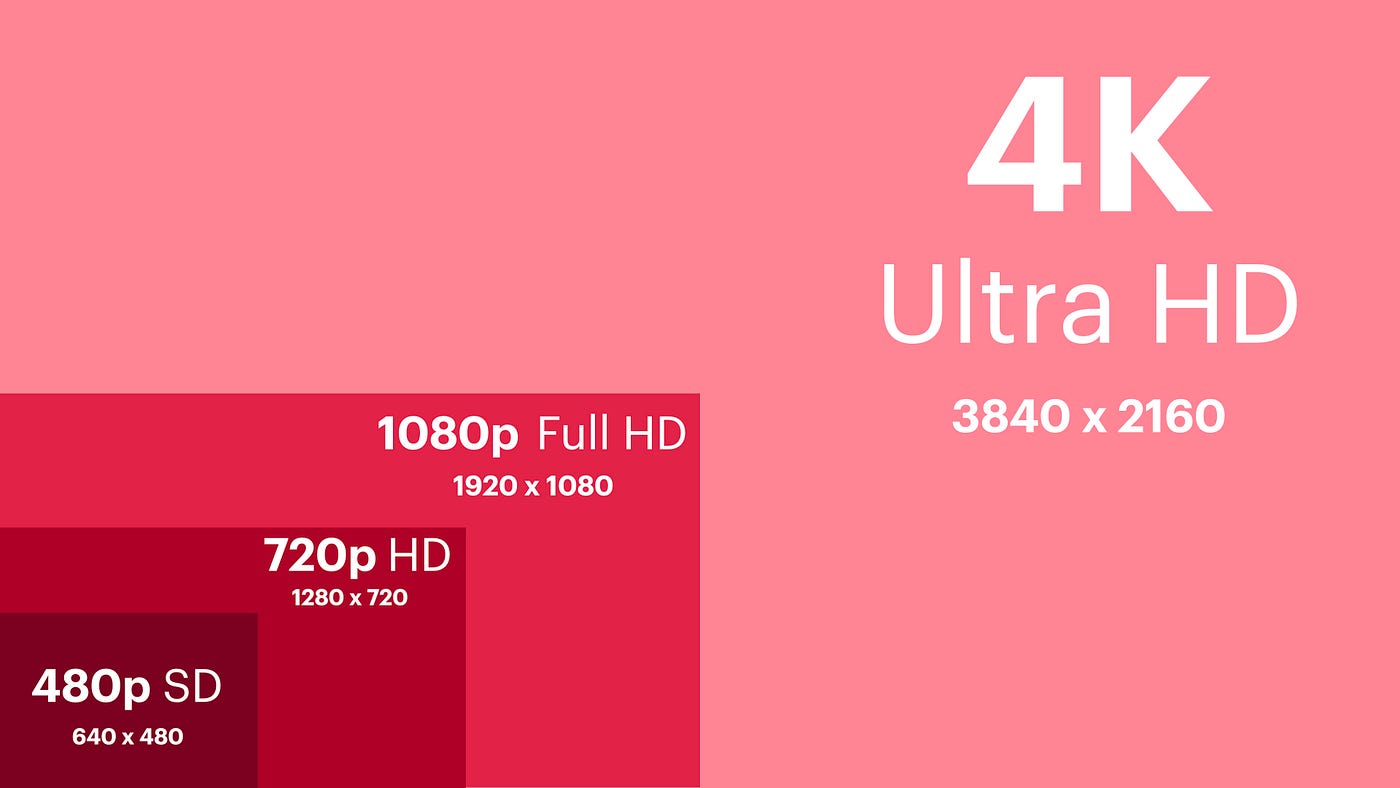
What is 4K resolution? It's a term you've probably heard tossed around when shopping for TVs or monitors. 4K resolution refers to a display with a horizontal resolution of approximately 4,000 pixels. This means sharper images, more vibrant colors, and an overall better viewing experience. Imagine watching your favorite movie with such clarity that you can see every tiny detail. Sounds amazing, right? But there's more to it than just a pretty picture. From gaming to professional video editing, 4K resolution is changing how we interact with screens. Ready to dive into some cool facts about this tech marvel? Let's get started!
Key Takeaways:
- 4K resolution, also known as Ultra High Definition (UHD), offers sharper images, better color accuracy, and enhanced viewing angles, revolutionizing home entertainment, gaming, and various industries.
- As technology advances, 4K resolution is paving the way for even higher resolutions like 8K, combined with HDR technology, and benefiting virtual and augmented reality applications.
What is 4K Resolution?
4K resolution, also known as Ultra High Definition (UHD), has become the new standard for televisions, monitors, and even smartphones. It offers a significant improvement in picture quality compared to its predecessors. Let's dive into some fascinating facts about 4K resolution.
-
4K resolution refers to a display resolution of approximately 4,000 pixels across the horizontal axis.
-
The exact resolution for 4K is 3840 x 2160 pixels, which is four times the pixel count of Full HD (1920 x 1080).
-
Cinema 4K has a slightly different resolution of 4096 x 2160 pixels, used in digital cinema.
-
The term "4K" comes from the horizontal pixel count, unlike previous standards named after their vertical resolution.
The Evolution of 4K Technology
The journey to 4K has been marked by significant technological advancements and industry shifts. Here are some key milestones in the evolution of 4K technology.
-
4K technology first appeared in the early 2000s but became mainstream around 2012.
-
Sony was one of the pioneers in 4K technology, introducing the first 4K home theater projector in 2012.
-
The first 4K TV was released by LG in 2012, marking the beginning of consumer adoption.
-
Streaming services like Netflix and Amazon Prime started offering 4K content in 2014, boosting its popularity.
Benefits of 4K Resolution
4K resolution offers numerous advantages that enhance the viewing experience. Let's explore some of these benefits.
-
Higher pixel density means sharper and more detailed images, even on larger screens.
-
Better color accuracy and depth, providing a more lifelike viewing experience.
-
Improved contrast ratios, making dark scenes darker and bright scenes brighter.
-
Enhanced viewing angles allow for a better picture quality from different positions in the room.
4K in Different Industries
4K resolution isn't just for home entertainment. Various industries have adopted this technology for different applications.
-
Filmmaking has embraced 4K for its superior image quality, allowing for more detailed and immersive visuals.
-
Gaming has seen a significant boost with 4K, offering more detailed and realistic graphics.
-
Medical imaging uses 4K for clearer and more precise images, aiding in accurate diagnoses.
-
Security systems benefit from 4K cameras, providing higher resolution footage for better identification.
Challenges and Considerations
While 4K offers many benefits, there are also some challenges and considerations to keep in mind.
-
Bandwidth requirements for streaming 4K content are significantly higher than for lower resolutions.
-
Storage space for 4K videos is much larger, requiring more robust storage solutions.
-
Processing power needed to handle 4K content is greater, necessitating more powerful hardware.
-
Compatibility issues can arise with older devices that do not support 4K resolution.
The Future of 4K and Beyond
As technology continues to advance, 4K resolution is paving the way for even higher resolutions and new innovations.
-
8K resolution is already on the horizon, offering twice the resolution of 4K.
-
HDR (High Dynamic Range) technology is being combined with 4K to provide even better color and contrast.
-
Virtual reality (VR) is benefiting from 4K, offering more immersive and realistic experiences.
-
Augmented reality (AR) applications are also leveraging 4K for clearer and more detailed overlays.
Interesting Facts About 4K
Here are some additional interesting facts about 4K resolution that you might not know.
-
4K Blu-ray discs offer the highest quality 4K content, with less compression than streaming services.
-
YouTube supports 4K video uploads, allowing content creators to share high-resolution videos.
-
4K upscaling technology allows lower resolution content to be displayed at near-4K quality.
-
4K projectors are becoming more affordable, making home theater setups more accessible.
-
4K monitors are popular among professionals for tasks requiring high detail, such as graphic design and video editing.
Fun Facts About 4K
Let's wrap up with some fun and quirky facts about 4K resolution.
-
4K TVs are now more common than Full HD TVs in many households.
-
The human eye can distinguish the increased detail in 4K resolution, especially on larger screens.
-
4K content is available in various genres, from movies and TV shows to documentaries and sports.
-
4K cameras are now standard in many smartphones, allowing users to capture high-resolution videos on the go.
-
4K drones are popular for capturing stunning aerial footage with incredible detail.
-
4K gaming consoles like the PlayStation 5 and Xbox Series X offer enhanced gaming experiences.
-
4K streaming devices like the Roku Ultra and Apple TV 4K provide easy access to 4K content.
-
4K wallpapers are available for download, allowing users to enjoy high-resolution images on their desktops.
-
4K live streaming is becoming more common, offering viewers a higher quality experience for events and broadcasts.
-
4K technology continues to evolve, with new advancements and applications emerging regularly.
The Future of 4K Resolution
4K resolution has transformed how we experience media. With four times the pixels of 1080p, it delivers stunning clarity and detail. From gaming to streaming, 4K offers a richer, more immersive experience. As technology advances, 4K is becoming more accessible and affordable. TVs, monitors, and even smartphones now support this high-definition standard.
The benefits of 4K aren't just limited to entertainment. Fields like medical imaging, security, and virtual reality also gain from its enhanced detail. As more content becomes available in 4K, the demand for compatible devices will continue to grow.
In short, 4K resolution is here to stay. It’s reshaping how we view and interact with digital content, making everything sharper, clearer, and more lifelike. So, if you haven't yet made the switch, now might be the perfect time to embrace the future of visual technology.
Frequently Asked Questions
Was this page helpful?
Our commitment to delivering trustworthy and engaging content is at the heart of what we do. Each fact on our site is contributed by real users like you, bringing a wealth of diverse insights and information. To ensure the highest standards of accuracy and reliability, our dedicated editors meticulously review each submission. This process guarantees that the facts we share are not only fascinating but also credible. Trust in our commitment to quality and authenticity as you explore and learn with us.


